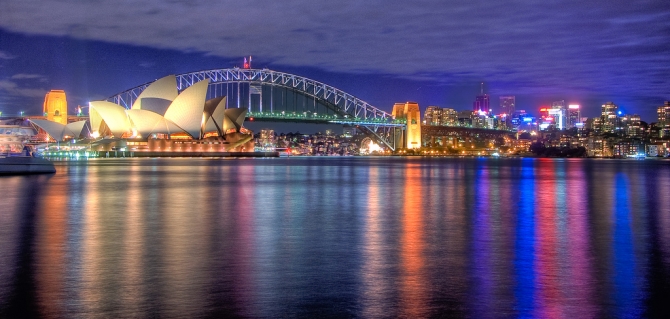In 1991 there were just 5,000 people living Sydney’s central business district. At the end of last year more than 22,000 had taken up residence among the office blocks. And that figure looks set to rise by at least another 5,000 in the next five years as the city follows New York and London with a move toward inner-city living.

“People want to live in the heart of the city while companies are looking to move out of their older, second-grade commercial buildings and into premium-grade offices,” says developer Daniel McNamara, attempting to explain the district’s apparently unstoppable shift from private enterprise to private residence.
With the city’s residential market enjoying a 15 per cent annual price rise, commercial owners and developers are facing a nine per cent business district vacancy rate — partly blamed on Australia’s softening economy — and, not surprisingly, are now chasing a new source of revenue.
“The conversion of an office block into residential will, more often than not, provide a greater return,” says Stuart Cox, of Savills estate agents. “Developers are typically looking to make a 20 per cent return on a conversion.” More than A$1bn (£558m) of commercial property in Sydney has been bought over the past year by developers with plans to redevelop or convert the site for residential use, he adds, with another 130,000sq metres of commercial property in the central business district earmarked for conversion over the next three years.
One recently completed project is the conversion of the neglected Eliza building, overlooking Hyde Park. The 17-storey block now incorporates 19 lavish apartments, including a A$15m (£8.3m) penthouse, with views over Sydney Opera House and the harbour.
“Surging demand for residential property, investor interest, low interest rates and a lot of owners of depressed, low-grade commercial buildings are making conversions the city’s flavour of the month,” says Tim Turpin, of Thinc consultancy.
Unlike the soon to be completed Eliza project, where the original office block was demolished and rebuilt on the same site, retaining an existing building can be advantageous when it comes to complying with planning regulations. “Planners often incentivise adaptive re-use by allowing a greater saleable area and floorspace ratio to developers which agree to retain heritage features,” adds Turpin.
Until recently Sydney had been relatively slow to take on the challenge of converting older commercial buildings. The first major project was delivered in the early 1990s by developer Robert Magid. His scheme added an extra nine floors and balconies on to the former Esso building.
“It often takes a fresh pair of eyes to see the opportunity,” says Michael Gaston, an architect with Kann Finch, who worked on the conversion. “And one of the benefits of working with older buildings is that they are often over-engineered. In other words, they can support additional weight and extra storeys.”
Increasingly those fresh eyes have belonged to Chinese and Asian investors. Greenland Group, a state-owned Chinese developer, recently bought the Sydney water board site for A$100m (£56m) from Canada’s Brookfield Asset Management. It plans to convert the heritage-listed former water board building into a hotel and luxury apartments.
Previous Post
Historic Royal Palaces close to Tower of London Sale